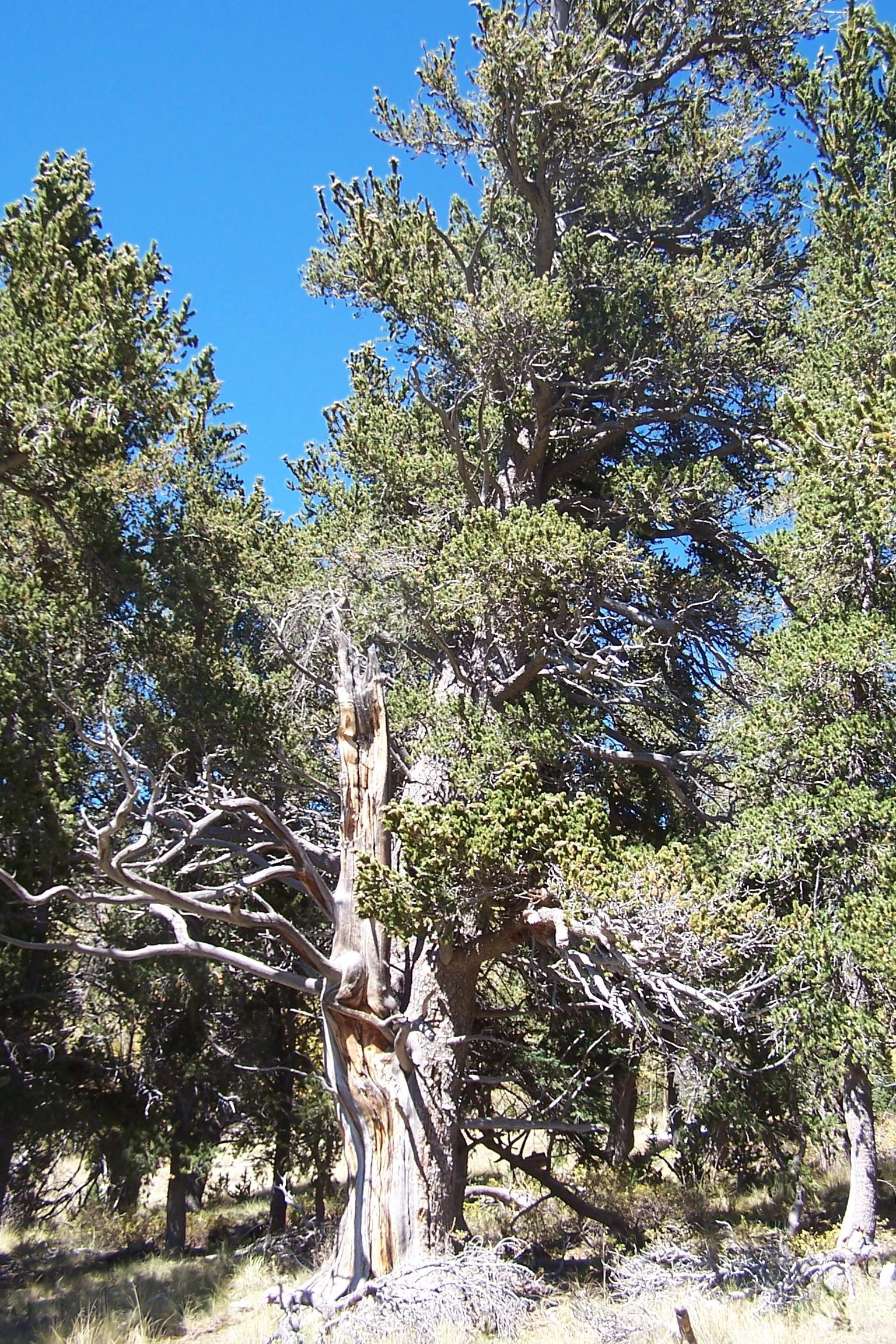bristlecone pine (Pinus aristata)
First place state and national champion bristlecone pine in San Juan National Forest, Cucharas Pass.
Species info:
Leaves: Needles occur in bundles (fascicles) of five. They are dense, rigid, and dark green, creating a distinctive “foxtail” effect due to extremely long retention (10–17 years). Needles are 1 to 1¾ inches long and often dotted with white resin flecks.
Leaflets: None (needles only).
Leaf Surface: Stiff, sharply pointed, and somewhat curved. Surfaces show characteristic speckled white resin spots. Needles are thick and durable, remaining on the branch for over a decade.
Bark: Thin, smooth, and gray-white on young stems; becoming furrowed, fissured, and reddish-brown with age.
Flowers: Male and female reproductive structures occur on the same tree (monoecious). Male pollen cones are small and yellowish; female cones start purplish before developing into mature seed cones.
Fruit: Cones are 2–4 inches long, ovoid, and sessile (no stalk). Each cone scale bears a small bristle-like prickle. Mature cones are brown and woody and release seeds adapted for wind dispersal.
Botanical: Pinus aristata
Family: Pinaceae
Mature Height: Typically ≤25 feet in Colorado landscapes (can be taller in ideal native environments)
Canopy Spread: Variable; irregular and compact
Foliage Type: Evergreen conifer
Flower: Inconspicuous
Fruit: Cone
Tree Shape: Small, stout, irregularly shaped; often picturesque with age
Growth Rate: Slow in most conditions; up to ~12" per year in irrigated landscapes
Water Use: Very low; thrives in dry, rocky, well-drained soils
Hardiness: Zones 3–7
Soil Preference: Prefers dry, rocky, well-drained sites; intolerant of poorly drained or wet soils
Sun Exposure: Full sun; prefers open exposures
Wildlife Value: Provides limited food; seeds eaten by birds and small mammals; offers shelter in harsh mountain environments
Wood: Dense, resinous, and highly decay-resistant; trees are famous for extreme longevity
Pests/Pathogens: Susceptible to bark beetles, dwarf mistletoe, and white pine blister rust
Planting Recommendations: This slow-growing Colorado native is recommended for most sites.
Information Sources:
Front Range Tree Recommendation List
Michael Dirr, Manual of Woody Landscape Plants (University of Georgia, 1990)
Michael Kuhns, Trees of Utah and the Intermountain West (Utah State University Press, 1998)
H.D. Harrington. Manual of the Plants of Colorado Harlow & Harrar, Textbook of Dendrology


